Behind the Scenes of Jim Walmsley’s Record-Setting Grand Canyon Run
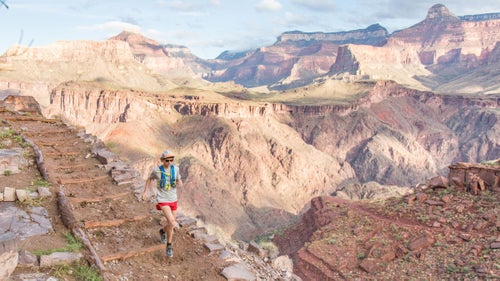
At last summer’s Western States 100, Jim Walmsley had his heart broken. Headed into mile 93 of ultrarunning’s most prestigious race, the 26-year-old professional trail runner, in his first-ever 100 miler, was having the race of his life. He had a seemingly insurmountable lead and looked poised to break Timothy Olson’s 2012 course record. But then calamity hit. A missed turn in the home stretch ended up costing Walmsley the record and a podium finish. He wound up in twentieth place, clocking 18:45:36 after clawing his way back to the course and enduring muscle seizures over the final miles. Walmsley was sanguine about simply finishing, but there was no way he could conceal his disappointment. “To be completely honest, I’m not sure if I’ll ever be able to put together such a magical day again,” he said at the time.
Thankfully, he was wrong.
This past Tuesday, Walmsley shattered Rob Krar’s record for the double-crossing of the Grand Canyon—or, as it’s called, Rim-to-Rim-to-Rim. Setting off from South Kaibab trailhead in the predawn hours of October 4, Walmsley traversed the 42 miles from the South Rim to the North Rim and back in a blazing 5:55:20, averaging 8:27 per mile on a run that included 24,000 feet of vertical change. En route, he also managed to break the Rim-to-Rim record, with a time of 2:46:08.
We spoke to Jim about his incredible run and whether this accomplishment helps ease the pain of the Western States debacle.
Photo: Born and raised in Phoenix and now living in Flagstaff, Walmsley does much of his training in and around his state’s famous geographical feature. For him, going after a fastest known time in the Grand Canyon is doubly significant: not only is this his home turf, it is also the favorite training locale of trail-running legend Krar. “It’s a natural wonder of the world,” says Walmsley. “Rob Krar really helped establish it as one of the top FKTs in the world—just the fact that he held the record made it really prestigious.”
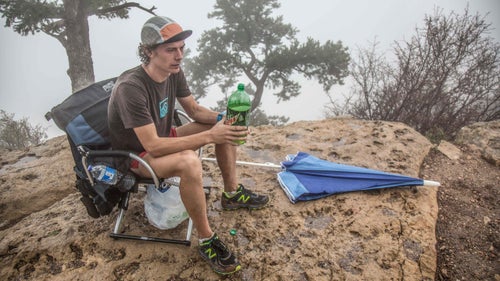
One year ago, Walmsley ran a north-to-south rim-to-rim traverse of the Grand Canyon, but didn’t manage to break Rob Krar’s record of 2:51:28. (He finished in 3:02.) He says the 2015 attempt was more of an informal training run. He points out that one of the advantages of attempting FKTs is that if they don’t go well, you don’t have to tell anybody. He hadn’t done much planning and says his fitness was probably not at the level it needed to be. “And I was really unfamiliar with the trail,” says Walmsley. Additionally, damp conditions last year made a fast time unlikely. “When the dirt in the canyon gets wet, it turns into a real sticky clay. The trail itself puddles up a lot and there’s a lot of weaving that you have to do.”
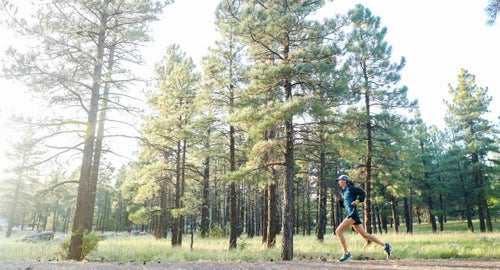
After Western States in June, Walmsley hit the reset button. He started building up his mileage from scratch. The first week back, he ran a grand total of six miles, followed by a 14-mile week. Once he hit 40, Walmsley began adding ten miles per week. He says that this incremental approach resulted in the “prettiest build-up” he’s ever had, one that peaked with a 125-mile week less than a month before his FKT.
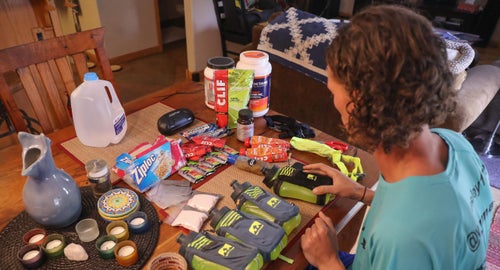
Walmsley slept in on the morning prior to his big run. He spent the day “prepping his bottles” and ate margherita and veggie pizza at home with his entourage before going to bed at 8 p.m.
![On the day of his run, Walmsley woke up at 2 a.m. and left his house with his crew at 2:35. The official starting time from the South Kaibab trailhead was 4:26 a.m. “It was kind of tricky doing a night descent [into the canyon], but I went out with a headlamp around my waist and a headlamp on my head,” Walmsley says. The main reason for Walmsley’s “dark start,” as he calls it, was to ensure that he would avoid mule trains for at least the first 35 miles of the run: the pack animals tasked with the unenviable job of schlepping visitors up and down thousands of feet are a wild card that can derail otherwise promising FKT attempts.](https://cdn.outsideonline.com/wp-content/uploads/2016/10/05/jim-walmsley-dark-start-scaled.jpg?width=500&enable=upscale)
On the day of his run, Walmsley woke up at 2 a.m. and left his house with his crew at 2:35. The official starting time from the South Kaibab trailhead was 4:26 a.m. “It was kind of tricky doing a night descent [into the canyon], but I went out with a headlamp around my waist and a headlamp on my head,” Walmsley says. The main reason for Walmsley’s “dark start,” as he calls it, was to ensure that he would avoid mule trains for at least the first 35 miles of the run: the pack animals tasked with the unenviable job of schlepping visitors up and down thousands of feet are a wild card that can derail otherwise promising FKT attempts.
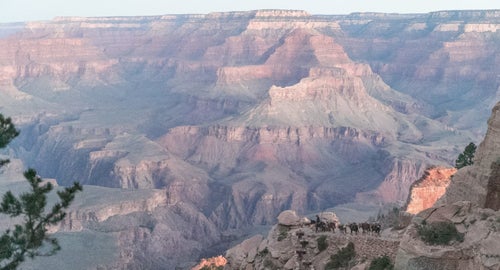
Despite going out a little quicker than he’d planned (Walmsley logged three sub six-minute miles within the first hour of the run), he said he felt really strong most of the time, consistent with a year in which he’s managed to peak on race day. Nevertheless, when he reached the North Rim in a R2R record time of 2:46:08, there was some unanticipated temptation to just call it a day and catch a ride back with his friends. But Walmsley didn’t yield. He had more in the tank. Good thing, since the final ascent out of the canyon took him to his physical limits. “That second climb out of the canyon is just a monster,” he says. “I ran 1:26 from the river up to the trailhead on South Kaibab, which is one of my slower times, but all in all I was still moving pretty well.”
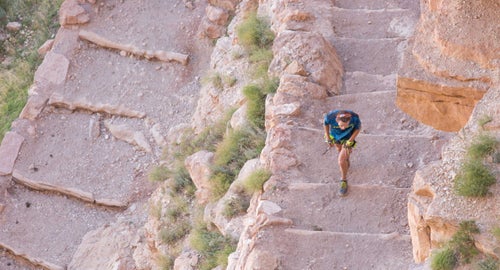
Despite his fitness level, the Grand Canyon humbled Walmsley at times. “There were moments of power-hiking up. It’s just a lot of elevation change—it’s pretty tough,” he said. “There was a lot of yelling at myself. You’re pretty isolated out there, so you’re free to give yourself your own motivation. There was one time where I was yelling at myself and I turned the corner and there were two hikers. I was, like, ‘Oh, sorry.’”

Rather than elation, Walmsley’s first emotion after finishing was relief. “When I first finished, everything was just hurting so bad and had been hurting for so long. I was just like, ‘Thank god, I get to sit down,’” he says. “But the more I let it sink in, the more I felt it was awesome. Getting to be the first person who broke six hours for the Rim-to-Rim-to-Rim felt pretty special.”

Another benefit of home-court advantage: Walmsley got to see his parents after 42 miles of lonesome canyon running. They had driven up from Phoenix to be there for the finish.
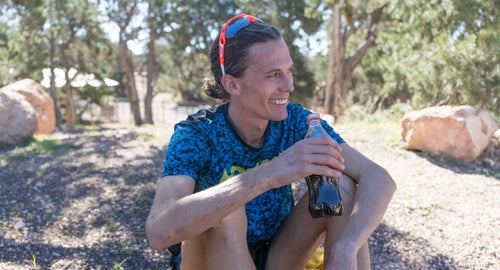
Despite the enormity of his accomplishment, Walmsley doesn’t see his R2R2R record as a redemption for his botched Western States race. Rather, he views it as a confidence booster—evidence that he’s on the right track to further establish himself as a dominant ultrarunner. He will be putting that dominance to the test by running two major upcoming races in quick succession: the JFK 50 Miler on November 19 in Maryland, and the San Francisco iteration of the North Face Endurance Challenge, on December 3.
As for Western States, Walmsley says he’ll be back next June, likely with a little bit of extra motivation. “I’ll be taking it a little more personally next year,” he says.